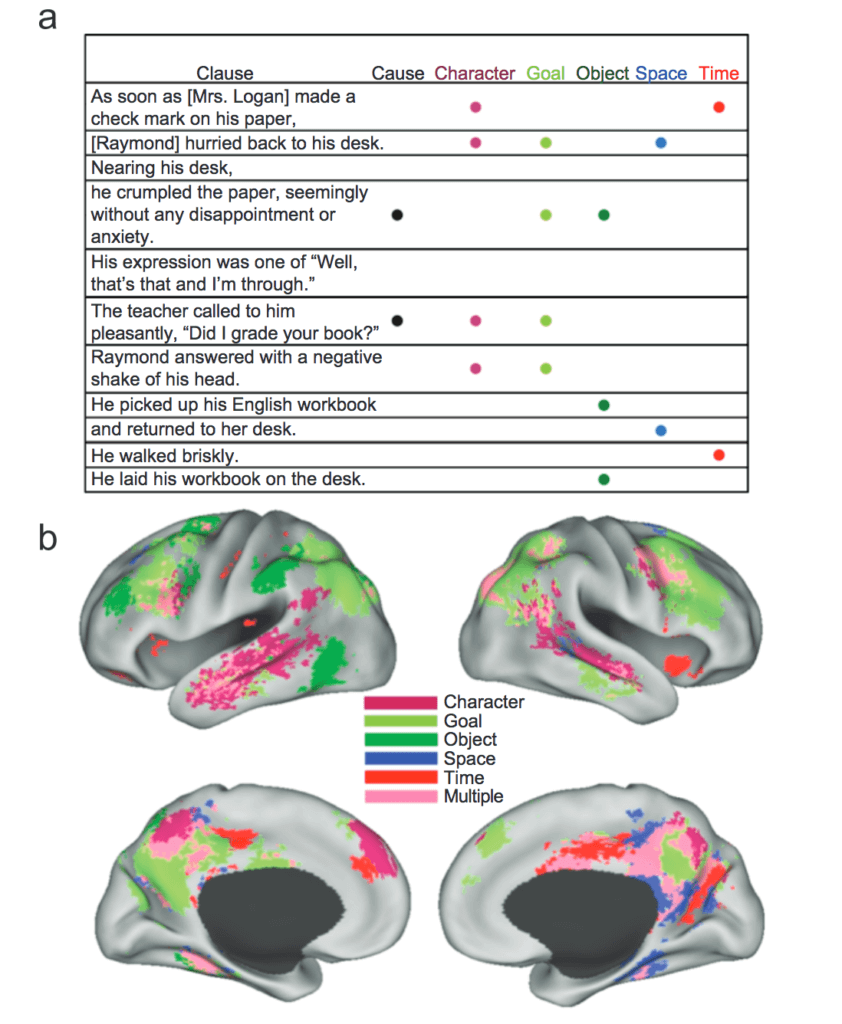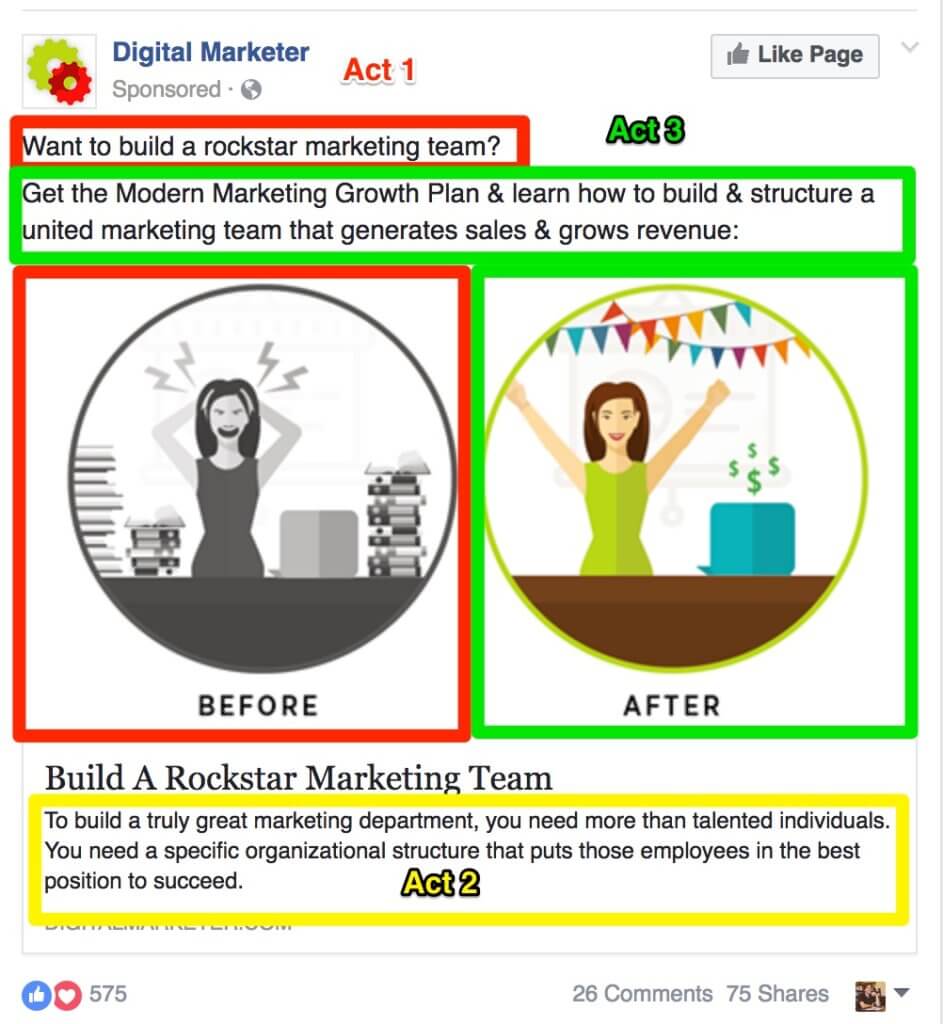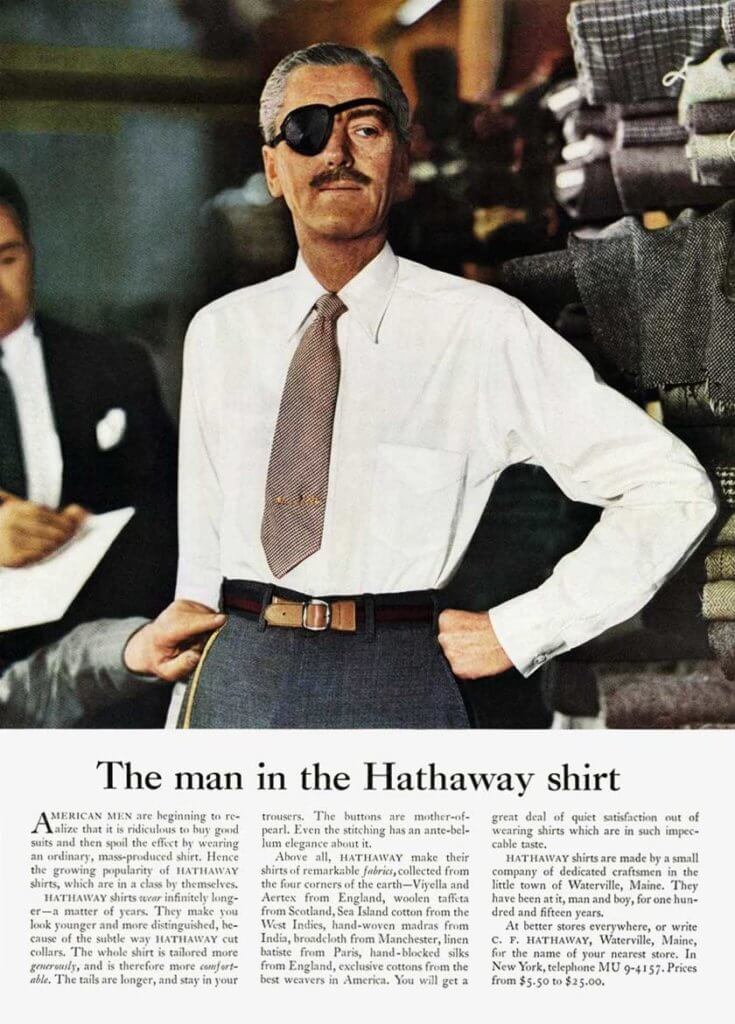
20 Sep Master the power of Storytelling your Ads
[ad_1]
Imagine you’ve just made a discovery. You’ve uncovered a secret that can help millions of people improve their lives.
You put it together in a nice ebook, and you’re feeling generous, so you’re ready to give it away for free. Your advice is actionable and easy to understand with crisp supporting graphics.
You share it on social media, with your email list, and create some ads. You then sit back and wait for the thunderous response as you change the world.
But, nothing happens. You get a few views, a few opt-ins, but overall you’re feeling pretty disappointed. Something’s missing.
In the movie Inception, Leonardo DiCaprio’s character, Dom, is a professional at going into people’s subconscious by entering their dreams and discovering their secrets.
As the plot unfolds, he is challenged to do something seemingly impossible. He must plant an idea into someone’s mind but make them think they came up with it themselves.

That’s every marketer’s dream: to give someone else an idea and have them take full ownership of it, and take action.
In the movie, doing this requires all kinds of death-defying car chases, gunfights, and other adventures. Fortunately for us, we don’t need mysterious dream entering technology or combat skills to do this.
There is a tool you can use to enter the mind of your ideal customer, to show them a better world with your product, and to inspire them to take action.
That tool is storytelling.
Storytelling is the bridge you use to connect your ideas, products, and services with the imaginations of your audience.
In this post, we’ll explore different elements of storytelling and show you how your can use these storytelling tools to create better ads.
Why we need stories
Without a compelling story, even the most valuable and powerful ideas will get ignored.
Facts and ideas without story activate the “language processing” areas of our brains, but this area has little impact on our emotions or, more importantly, our decision making. Us humans are emotional creatures, not rational ones. We need a feeling to connect with ideas. We need emotions to make decisions.
A study conducted at Washington University in St. Louis revealed an interesting pattern when examining the brain activity of those listening to a story. Take a look below at how different areas of the brain light up when describing various elements of a story.
 (Source)
(Source)
What’s more interesting is how similar the brain activity is from hearing a story to actually carrying out those actions in real life. As far as our brain is concerned, hearing a story and imagining ourselves in the character’s shoes is just as authentic as reality.
This is powerful. With a story, you can break through the noise of your competition and leave a lasting impression on your customers, instead of trying to force facts about your product or service on your audience and expect them to understand why they are important. You can create an experience with a story that allows them to discover these facts for themselves.
Let’s dive into how we can use storytelling techniques in our ads to inspire emotions and action in our audience.
Use common story formulas
Most timeless stories follow a fairly predictable pattern. Most plots can be summed up as a single line on a graph. There are plenty of ways to add embellishments and complexity, but for the most part, this is the anatomy of a story. This is a good thing; this familiar pattern is easy for people to internalize and follow. By understanding this formula, we can create the same story arc in our ads.
 (Source)
(Source)
In the world of digital marketing, you are competing for a few seconds of attention from your viewer. Using a classic story formula makes it easy to understand and adopt the ideas in your story. Most classic stories fit a simple 3-act formula:
- Act 1 – The “old” or the current world is described and a problem or confrontation that arises for the hero.
- Act 2 – This is the journey. The hero must learn a lesson or skill to overcome the challenge.
- Act 3 – A key decision is made, or a “new way” of looking at things is discovered. The hero faces their fear, and they live happily ever after.
This structure focuses on the conflict and its resolution. The conflict is what keeps us interested, and its resolution is what gives us a sense of relief and satisfaction at the end.
When using this structure for your ads, you’ll want your viewer to identify with the hero, and the “new way of looking at things” that shows up in Act 3 is your product or service.
Since you only have a few lines of copy in an ad and perhaps a landing page to tell your story, I suggest a slight variation. Move Act 3 in front of Act 2. Show your viewers the world without the problem early to build the desire to continue reading your ad, or take further action. Here’s how that would look:
- Act 1 – The “old” “old world” with all the pain and drudgery of a problem.
- Act 3 – Happily ever after, the world without the problem.
- Act 2 – Present your way to arrive at the solution and the journey your customer will take with you.
By moving Act 3 forward, you give your viewers the chance to experience the positive emotions of their problem being solved or their desires fulfilled.
You may be asking, “How can I fit all of that information into a single ad?” Let’s take a look at an example to see how it is done.
Digital Marketer’s ad for their guide on building a rockstar marketing team captures this 3-act formula with elegance.

Their simple before and after graphic shows the transformation that happens as a result of building a marketing team. The text above the image draws you into the hero’s world by asking if you want to build a rockstar marketing team. The “new way” is the “Modern Marketing Growth Plan” and “happily ever after” is generating sales and growing revenue.
The “link description” field under the image is used for “Act 2.” It hints at what is necessary to build a great marketing team and what you’ll find in the Modern Marketing Growth Plan.
If you want more examples of formulas that can be used to create stories that can fit into a short ad or tweet, check out “If Don Draper Tweeted: The 27 Copywriting Formulas That Will Drive Clicks and Engagement on Social Media” by Kevan Lee, founder of Buffer.
Use carousel ads to create a narrative
Facebook’s and Instagram’s carousel ad feature is an excellent visual tool for telling stories. You can string images and captions together to create an interactive narrative.
This is particularly powerful with mobile advertising. The purpose of an ad is to get people to engage. Even the small action of scrolling from one image to the next is a successful engagement and makes it more likely that the viewer will take additional action. This is one of the few types of ads that make it very easy for viewers to engage with it directly.
Create a series of images that tell a story. You can use the 3-act formula mentioned above to guide what images you use. The first sets up the problem or the desire; then each following image can build suspense or show how that desire gets fulfilled.

Take a look at how this ad from Love Found tells the classic story of “girl meets boy” in this simple series of images and supports it with simple captions.
For more great examples on telling stories with carousel ads, check out: How to Tell Stories With Facebook and Instagram Carousel Ads
Include a hero and a desire
To make your story relatable, your subject or hero should be easy for your viewers to relate to. A hero does not have to be a single person; it can be a group of people, an idea, cause or a company.
The purpose of a hero is to give your viewers a perspective in the story your create. They will see the world through your hero’s eyes and feel their emotions. Through your hero, you can guide your viewers through your story and prompt the emotions and ideas that you want them to associate with your brand.
Take a look at how this video from Bench sets up a narrative of a young entrepreneur. He opens describing the long hours, sleepless nights and the risks that he faces. While he’s describing this, he looks down at his phone to send out 1 last email.
You can see at the end of the video that the hero finds all these difficulties worthwhile. With them comes his ability to choose, to choose what to work on, when to work and how to live his life. At the end of the day, he is in control.
This story embodies the ideal customer for Bench. This quick video captures both pain points and desires of their customer and gives them a short narrative.
Deliberately hide information
One tool that writers use to capture the imaginations of their audiences is by carefully managing the balance of what the reader knows and what the reader does not know. By leaving out key details, you control what kind of questions your viewers ask and where they direct their attention.
Withholding or hiding information is crucial to the storyteller’s make-believe. It forces the audience to figure out who the character is and what he is doing and so draws the audience into the story. When the audience no longer has to figure out the story, it ceases being an audience, and the story stops.”
John Truby, The Anatomy of Story
You can see this balance play out in horror movies. You start off with little clues at what the monster, ghost or alien looks like. Maybe you see it in the shadows in the background at first, or you see scratches on the wall. This starts your imagination turning, trying to fill in the gaps. You become invested in discovering what this creature is and what it wants. In the best movies, the monster is never fully revealed until the very end, keeping you in suspense the whole time.

A great example of this storytelling technique is in Gary Vaynerchuck’s ‘Storytelling in 2014’ Slideshare. Though it is now a couple of years old, it is a timeless example of how withholding information can drive a story and keep you clicking. Notice how on almost every slide Gary presents part of an idea, but never completely resolves the thought. See how slides 2 through 9 each leave you on a bit of a cliffhanger and keep you clicking forward to get that next little bit of information that’s missing.
Another example is the classic Ogilvy Ad, “The Man In The Hathaway Shirt.” The man with the eye patch immediately catches your attention, and the headline reinforces the mystery around the man. You want to know why he has an eyepatch. So you read through the long and detailed description of the shirt, but the man’s secret is never revealed.

Let’s take a look at how this tactic is used in Facebook Ads.
Take a look at this ad from VICE News. The first thing you read is, “There’s a reason people like Kobe Bryant are called “dumb money” investors.”

This line gives you a lot of information. Kobe Bryant is getting involved with startups, and apparently, he’s terrible at it. The questions arise, “What did Kobe invest in?” or “What disaster happened to earn Kobe that title?” and you’re hooked.
You’ll never believe what happened next
A slight variation on the ‘hiding information in your story’ tactic that has been popularized by media companies like Upworthy is the “You’ll never believe what happened next!” headline.
This tactic inspires curiosity in your audience. Curiosity is hard to resist.
It’s a simple formula to follow.
[Set up the conflict] then [hint at an unexpected result] or [describe your emotional reaction to the result].
Let’s take a look at an example of each.
Purple is an online mattress store that boasts that their mattresses are the only ones to pass the “raw egg test.” Anything that happens that involves both a mattress and a raw egg certainly qualifies as a conflict and captures your attention.
Look at how this headline for Purple sets up this conflict and tells the story from the perspective of their customer. They close by hinting that the result was “pure awesome.”

This leaves you wondering about the “raw egg test” and how Jared will fare with it. You might even have a small part of you that hopes the egg breaks. With only 2 short lines, a story is created, and you are hooked on finding out the result.
Another approach is to reference something specific in the article or page you are pointing to, and describe your response to it but not reveal the content. This gets people curious about what could have caused that reaction and sets up expectations for how the content will make them feel.

This line “I had to have a glass of wine before starting on #3,” is great because it sparks curiosity. Is the wine for celebration? Or is someone steeling themselves for some tough work? Would I react the same?
When thinking about how you can withhold information and create some mystery, ask yourself these questions:
- How can I spark questions in the minds of my customers and make them want to learn more?
- What should they find when they start to dig deeper?
- How does what they find make them feel about the brand?
- How do they identify with the brand as they learn more?
Conclusions
Storytelling can be one of the most powerful tools a marketer has at their disposal to reach their audience. Stories connect with our emotions, and our emotions drive our decisions.
With the techniques listed in this post, you should be able to create a compelling story in your ads, even if you only have a few lines of text to do it.
To recap, here are a few key takeaways from the post:
- Use classic storytelling formulas to create a narrative that your customers can easily understand and follow.
- Include a hero in your story that is easy for your audience to identify with.
- Remember that tension and conflict are what drive a story.
- Keep your audience intrigued by controlling what information you share and hide from them in your story.
- Keep your audience guessing by hinting at your reaction to what happens next in your story, but not revealing the details.
Kyle Gray is the founder of Conversion Cake, where he helps small businesses and startups with content marketing strategy and sales funnels. He is also the author of “The College Entrepreneur” a guide that teaches students how to build an entrepreneurial skillset while in school and use their university’s resources to help them build something amazing”.
[ad_2]
Source link
Social Media Agency, Social Media, Digital Marketing, Digital Marketing Agency, Search Engine Marketing, SEO, digital marketing agency dubai, video content marketing, crossfit marketing dubai, video marketing dubai, digital marketing agency abu dhabi, facebook marketing dubai, facebook marketing abu dhabi, digital marketing agencies in dubai, social media agency, content marketing dubai, content strategy dubai, branding dubai

